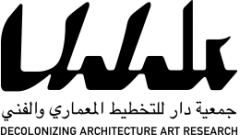Posted: 18.02.2011
“Planning the Common” is the DAAR new project for the 2011 and the second collaborative partnership between DAAR, the Al-Quds Bard Honors College, Municipality of Battir and local and internationals organizations.
The project will take the form of an International Summer Research Program that will take place during the summer of 2011 in Battir, Palestine. It will bringing together students, architects, NGO staff, and village officials. The residency will involve 10 international architects and artists, 15 students from the Honors College and local and internationals experts invited for lectures and seminars. If you are interested to participate send a CV and a brief portfolio to (info [at] decolonizing [dot] ps)
The Residency Program require a full time availability [from monday to friday], for a minimum of 4 weeks. Accommodation will be provided by the Summer Residency. The applicant should know that DAAR is looking for a candidate with: 1) a strong attitude to work collectively (we believe in collective intelligence) 2) to work in difficult and sometimes hostile conditions 3) a strong self-determinations and attitude to self organization 4) to be able to produce outcomes in short period of time.
CONCEPT
Territorially speaking, the common is different from both the public and the private. Both private and public lands are institutionalized relations between people and things that are regulated by the state. The state guaranties private property and maintains public property. Both private and public lands are territorial mechanisms for the governing of men and women. Sometimes this form of government operates by maintaining these distinctions and sometimes by blurring them. The endless privatization of the public space, mirrored by the incessant intrusion of public agents into the private domain are both techniques of government control.
In Palestine, the idea of the public is particularly toxic. Although prior to the establishment of the State of Israel, there existed a wide multiplicity of collective lands, and collective uses of land regulated at the level of different forms of community – agricultural, religious, nomadic, etc… -Upon occupying the land and excluding its people, the state flattened these all into one category – “state land”- and seized sovereign control over it. State lands became public space, but only in as much as it was reserved to the only public that was acknowledged as legitimate – the Jewish Israeli one. The contours of public land have become the blueprint for colonization, and through different legal procedures state lands have been often transformed into settlements. This form of sovereignty was willing to acknowledge only Palestinian individual rights, thus private land. The state’s mechanism of humanitarian balance could tolerate –in the “best” of the cases–Palestinian presence only as individuals. But, as we know, colonization –especially during and after Oslo– has severely targeted Palestinian private property too .
So in what way is the common different? The idea of the common land in our context is a set of relations between people and things – organized by the principle of equality – that is not necessarily mediated by the state
Case 01_The Parliament Building (Abu Dis) The idea of the first project is to engage with the empty spaces of the The Palestinian Legislative Council building in Abu Dis (the Palestinian Parliament) by imaging its reuse as a new common.
The construction of the building started during the euphoria of the Oslo Accord. The location in Abu Dis was chosen as a first step toward the establishment of East Jerusalem as the Capital of the future Palestinian State. With the collapse of the Oslo Accords, the eruption of the Second Intifada and the construction of the Wall just few meters from the building, the project has been abandoned . Today, its massive presence and incompleteness embody dramatically the frustrated ambitions of the Palestinian political leadership.
However, few crucial questions, centered around the notion of political representation and architectural form, seem to emerge: how could the building be re-imagined as an extraterritorial assembly that will include also half of the Palestinian population exiled outside the country? How could a reflection on the public and the common revive politically the abandoned building? Is this building the ultimate form of Palestine’s assembly and democracy, or do new political and architectural forms need to be invented?
Case 02_Public voids (Battir) The main legal resource reference for the Israeli colonization was the Ottoman Land Law of 1858. This law was the result of an agrarian reform across the Ottoman Empire, which was sovereign in Palestine until 1917. It recognized a plot of land as privately owned, “miri” (privately owned) land, if it had been continuously cultivated for at least ten consecutive years. If a landowner failed to farm the land for three consecutive years, the land changed its status to “makhlul”, which came under the possession of the sovereign state. Farmers did not want to pay taxes for land that could not be used for cultivation and therefore gave up ownership over uncultivated areas, even if these were only small patches of rocky ground that actually existed within their fields. “State land” could therefore inhabit uncultivated land.
The topographical folds, summits, slopes, irrigation basins, valleys, rifts, cracks and streams of Palestine, were no longer seen simply as naïve topographical features, but as signifiers to a series of legal manipulations, generating the patterns of “islands” of small privately owned fields within an area of uncultivated “state land.”
The Israeli Authority, during the 80s, expropriated fragments of uncultivated land in Battir. The result is a system of arbitrary voids. The project will re-imagine the use of these expropriated islands as common spaces for the local population. Claiming the islands as common spaces is an attempt to challenge the notion of public land as one of exclusively Jewish use.
